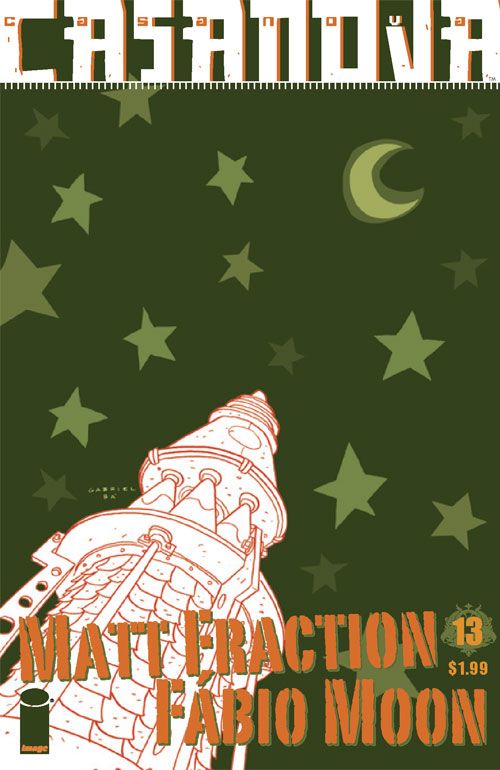I've heard that there might be some people in the world who aren't reading "Casanova." If you are one of those people, I implore you to reconsider your comic buying purchases and think about what "Casanova" has to offer:
Thrilling conspiracies.
Inter-temporal intrigue.
Robot duplicates.
Undercover agents.
Sadness.
Excitement.
Beauty.
"Casanova" is the best comic you're not reading, and if you are reading it, then it's probably one of your favorites, right?
Here's the thing about issue #13: it's a comic book that makes previous issues better in retrospect. In this issue, we learn that everything we saw in issue #12 had a different meaning -- a radically different meaning -- than what we thought. Zephyr Quinn's violent rampage through the ranks of E.M.P.I.R.E. was not an attack, it was an encoded message. She was working for her father, and his apparent decapitation was not what it seemed.
Issue #13 also provides flashbacks that add depth of characterization to the events of the "Luxuria" story arc, as reprinted in the Volume 1 collection from last year. Fraction and Moon cleverly use the color scheme from "Luxuria," the muted green, to signify a temporal shift into the past. The green tones, used so effectively in "Luxuria" with the illustrations by Moon's brother Gabriel Ba, contrast quite sharply with the shocking blue used in the current story arc. And as Fraction points out in the back matter, the flashbacks forced "Fabio to restage and recreate Gabriel's imagery." The effect is a series of one-page scenes which show Casanova Quinn (who has been absent from this series -- a series with his name in the title -- since issue #8) in a different way. Moon's softer line complements Fraction's fondly written remembrances of the missing Quinn, as each character remembers better times when Casanova was around to make them all feel safe. Moon's reimagining of the Ba-illustrated universe of "Luxuria" demonstrate the subjectivity of the past, but that's exactly the point. These aren't so much literal flashbacks as they are subjective memories, each linked to a character in the present storyline who needs to recall the comfort of the past. They are presented as literal flashbacks, since dead robot duplicates can't dream of the past (or can they?), but they operate as thematic moments, reminding us that this story is about more than just big explosions and cosmic agendas.
Plot-wise, Fraction and Moon build to what will surely be an intense climax next issue. But while the first seven issue of this series were almost all plot -- or densely woven, recursive plots which gained depth through excess -- the past six issues have presented a careful unfolding of one multi-layered sequence of events, and the series has seemingly matured. What started out, in issue #1 as a thrilling and stylized pastiche of the super-spy genre has become something far greater and more resonant, and that was probably Fraction's plan all along. As good as Fraction's Marvel work has been, "Casanova," untethered from mainstream continuity and conservatism, is his masterpiece.

